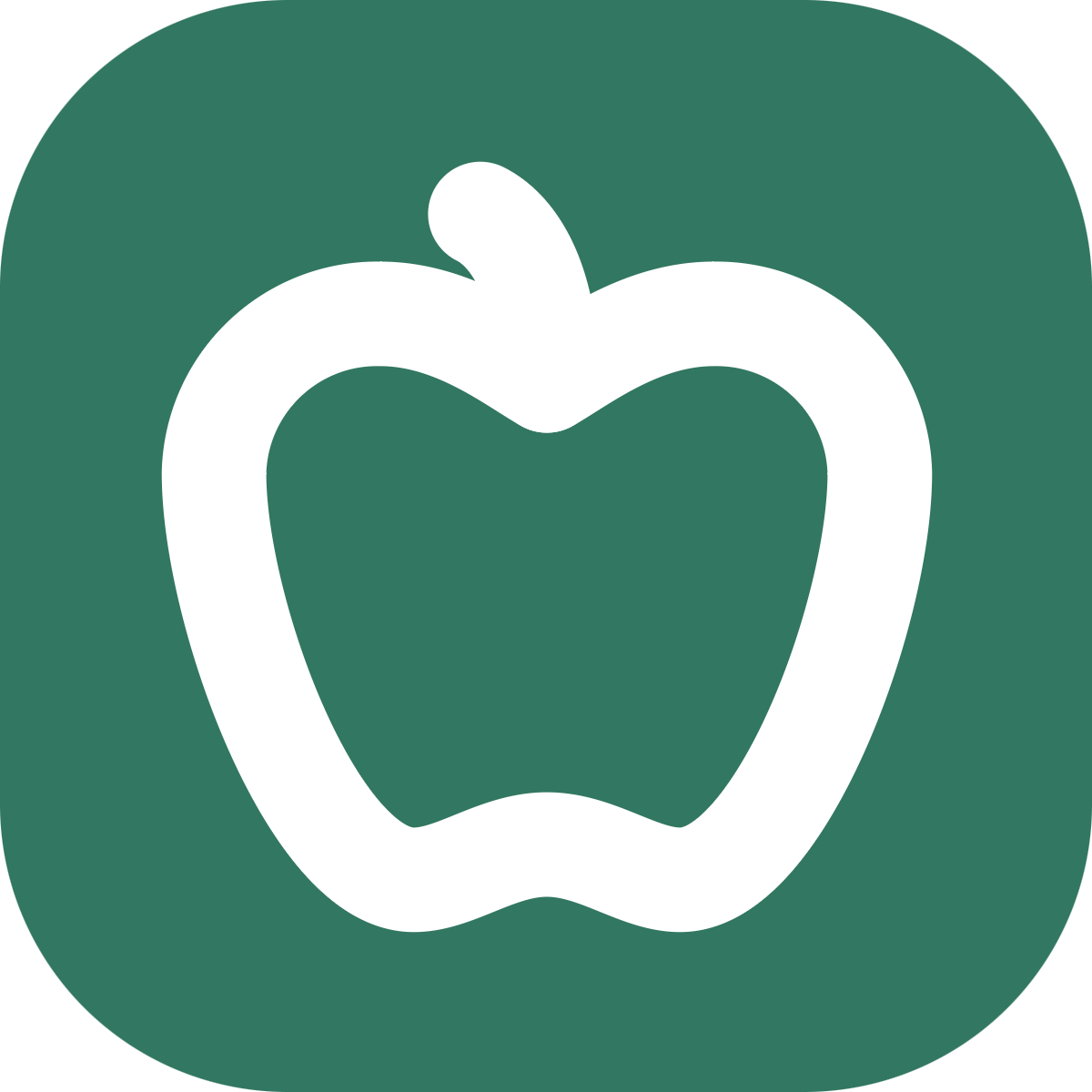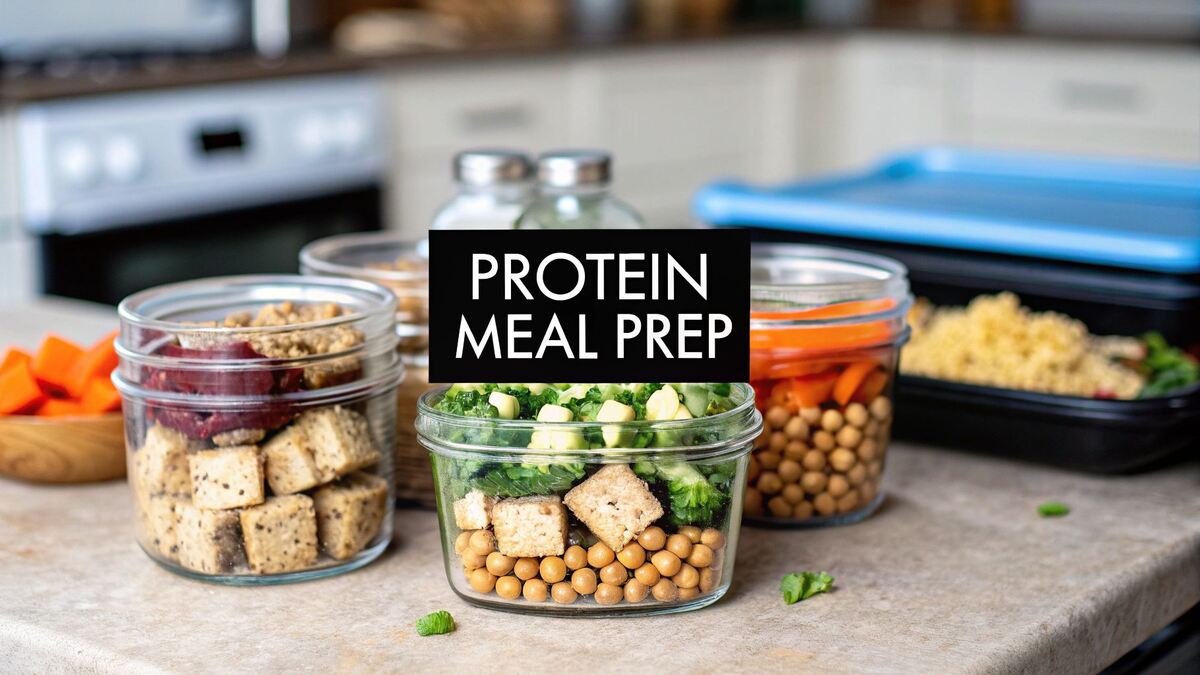A Practical Guide to Vegetarian Protein Meal Prep
Having a stash of protein-packed vegetarian meals ready to go can completely change the rhythm of your week. Think of it as batch-cooking your core plant-based ingredients—things like lentils, tofu, and quinoa—so you can throw together quick, healthy meals later. It’s the ultimate way to ditch that nightly cooking stress and actually stick to your health goals.
This whole approach is about making nutritious eating the most convenient choice, not just another thing on your to-do list.
Why Meal Prep Is Your Secret Weapon for Better Eating
Let’s be real. After a long day, the last thing anyone wants to do is figure out what to cook for a healthy, high-protein dinner. That's exactly where a good meal prep routine becomes a lifesaver. It’s not just about saving a few hours; it’s about freeing up your brainpower and making healthy choices feel automatic.
When your fridge is already full of delicious, pre-cooked options, you completely bypass that whole "what's for dinner?" struggle. That simple shift is often all it takes to avoid caving and ordering takeout for the third time this week.
The Power of Preparation
Having a plan in place truly transforms your entire week. Instead of starting from scratch every evening, you can assemble a fantastic grain bowl or a hearty wrap in just a few minutes. This proactive strategy is perfect for supporting fitness goals because it ensures you're consistently giving your body the high-quality protein it needs to recover and build muscle.
A solid meal prep system sets you up for success by:
- Cutting out decision fatigue. You make all your food choices on prep day, which clears up a surprising amount of mental energy for the rest of the week.
- Saving you money. Cooking at home is always cheaper than eating out or grabbing convenience foods. The savings really add up.
- Slashing food waste. When you plan your meals, you buy only what you need, and you actually use it.
This isn't just some passing trend; it's a practical shift in your lifestyle that makes healthy eating something you can actually stick with long-term. You're essentially doing your future self a huge favor by making sure a nourishing meal is always the easiest option.
This move toward planned, plant-based eating is part of a much bigger picture. The global plant-based meat market was valued at a whopping USD 8.57 billion in 2024 and is projected to skyrocket to USD 50.89 billion by 2034. It's clear that a massive number of people are embracing vegetarian options. You can discover more insights about the booming plant-based market and its future growth.
At the end of the day, vegetarian protein meal prep is about making the best choice the easiest choice. It turns a daily chore into an empowering habit that sticks.
Stocking Your High-Protein Vegetarian Kitchen
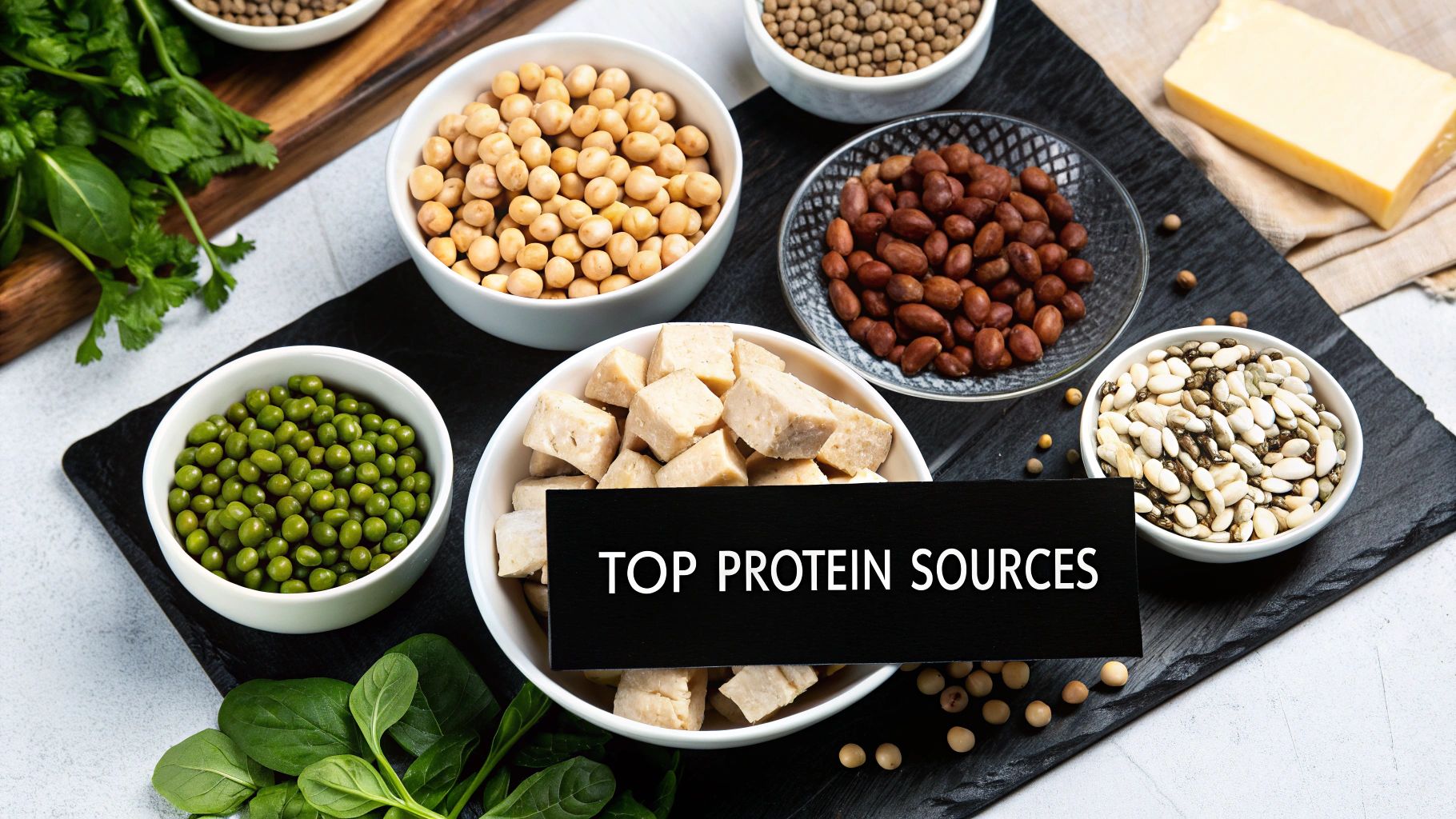
A great meal prep session doesn’t just happen on Sunday afternoon. It really starts with a smart, well-stocked kitchen. Honestly, having the right ingredients ready to go is half the battle, turning your cooking time into a smooth, creative flow instead of a last-minute scramble.
Think of your pantry and fridge as your personal toolkit. When you fill them with versatile, high-protein staples, you're building a foundation for countless meals. It’s not about buying everything in sight; it's about being strategic.
Your Pantry Powerhouses
For any plant-based eater, the pantry is the backbone of the entire operation. These are your shelf-stable heroes, the ingredients that are always there for you when you need them.
If you're serious about protein, here are the non-negotiables:
- Lentils and Beans: Whether you prefer canned or dried, you need these. I always have brown and green lentils on hand for hearty salads, plus red lentils that break down beautifully for curries. Chickpeas and black beans are a must. Just one cup of cooked lentils gives you around 18 grams of protein.
- Whole Grains: Quinoa is my go-to because it's a complete protein, making it an amazing base for grain bowls. I also love the chewy, nutty texture of farro, and you can never go wrong with classic brown rice for all-around use.
- Nuts and Seeds: Almonds, walnuts, chia seeds, and flax seeds are fantastic for adding a boost of protein and healthy fats. Hemp seeds are a real powerhouse; a quick sprinkle can add 10 grams of protein to almost any dish.
A well-curated pantry is your best defense against last-minute takeout orders. When you have the building blocks for a satisfying meal just a few steps away, making a healthy choice becomes the path of least resistance.
To help you get started, here’s a quick rundown of some of the best protein sources to keep on hand and how I like to use them.
Top Plant-Based Protein Sources for Meal Prep
| Protein Source | Protein per 100g (Cooked) | Best Meal Prep Use |
|---|---|---|
| Lentils | 9g | Hearty soups, stews, "meat" sauces, and cold salads. |
| Tofu (Firm) | 17g | Baked cubes, scrambles, stir-fries, and blended into sauces. |
| Tempeh | 19g | Marinated and baked, crumbled for tacos, or used in sandwiches. |
| Chickpeas | 9g | Roasted for snacks, added to salads, or blended into hummus. |
| Quinoa | 4g | Grain bowl bases, breakfast porridges, and mixed into veggie patties. |
| Edamame | 11g | A quick side, mixed into grain bowls, or blended into dips. |
| Hemp Seeds | 31g (raw) | Sprinkled on salads, blended into smoothies, or stirred into oatmeal. |
These are the workhorses of my weekly meal prep. They're versatile, relatively inexpensive, and packed with the protein you need to feel full and energized.
Fridge and Freezer Must-Haves
While your pantry provides the foundation, your fridge and freezer are where the fresh, high-impact proteins live.
In the fridge, I always have a block of firm or extra-firm tofu and a package of tempeh. They are absolute champs. You can make a tofu scramble for breakfast one day and have baked tempeh as the star of your dinner the next. If you do dairy, Greek yogurt is also a great shortcut for a quick protein boost.
The freezer is your secret weapon for convenience and cutting down on food waste.
- Frozen Edamame: This is one of my favorite freezer staples. It's a fantastic snack on its own or a great addition to salads, offering about 18 grams of protein per cup.
- Frozen Vegetables: Don't sleep on frozen spinach, broccoli, and corn. They're just as nutritious as fresh and ensure you never run out of greens.
- Batch-Prepped Grains: Here's a pro-tip: cook a huge batch of quinoa or rice, let it cool, and freeze it in individual portions. It makes assembling meals during the week incredibly fast.
By keeping these key areas of your kitchen ready for action, you're setting yourself up for a week of meal prep success. You’ll have a flexible inventory to pull from, making it so much easier to create delicious, protein-packed vegetarian meals without the stress.
So, How Do You Actually Plan Your Week?
Let's be honest, the biggest reason people quit meal prepping is boredom. The thought of staring at five identical containers of chicken, broccoli, and rice is enough to send anyone straight to the nearest takeout joint. I’ve been there.
That’s why I want you to completely forget that approach. Instead, let's talk about a game-changing method I swear by: component prepping. It’s the secret to keeping your meals interesting without spending your entire Sunday in the kitchen.
The idea is to create building blocks, not finished meals. So, instead of making five identical quinoa and black bean bowls, you cook a big batch of quinoa, a separate container of seasoned black beans, and a tray of roasted veggies. This tiny shift gives you the freedom to mix and match all week long, creating fresh-feeling meals in just minutes.
The Component Prepping Method
At its heart, this is a simple framework. On prep day, you’re just focusing on making four key things. This ensures every meal you throw together is balanced, keeps you full, and delivers the high-quality vegetarian protein your body needs.
Here’s what your prep list should look like:
- A High-Protein Base: This is the star of the show. Think a batch of baked tofu cubes, a big pot of savory lentils, or a container of marinated tempeh.
- A Complex Carbohydrate: Get a versatile grain cooked and ready. Quinoa, farro, or brown rice are all fantastic. Roasted sweet potato wedges also work beautifully here.
- A Batch of Vegetables: My go-to is a massive sheet pan of roasted broccoli, bell peppers, and red onion. You can also chop up raw veggies like cucumbers and carrots for salads or snacks.
- A Flavorful Sauce or Dressing: This is your secret weapon against bland food. A creamy lemon-tahini dressing, a zesty cilantro-lime vinaigrette, or a spicy peanut sauce can completely change the vibe of your meal.
Prepping components instead of entire meals is all about giving yourself options. It lets you decide what you're actually in the mood for each day, all while having that healthy, ready-to-go foundation waiting for you.
This is what it looks like in practice—everything prepped, separated, and ready to be combined into something delicious.
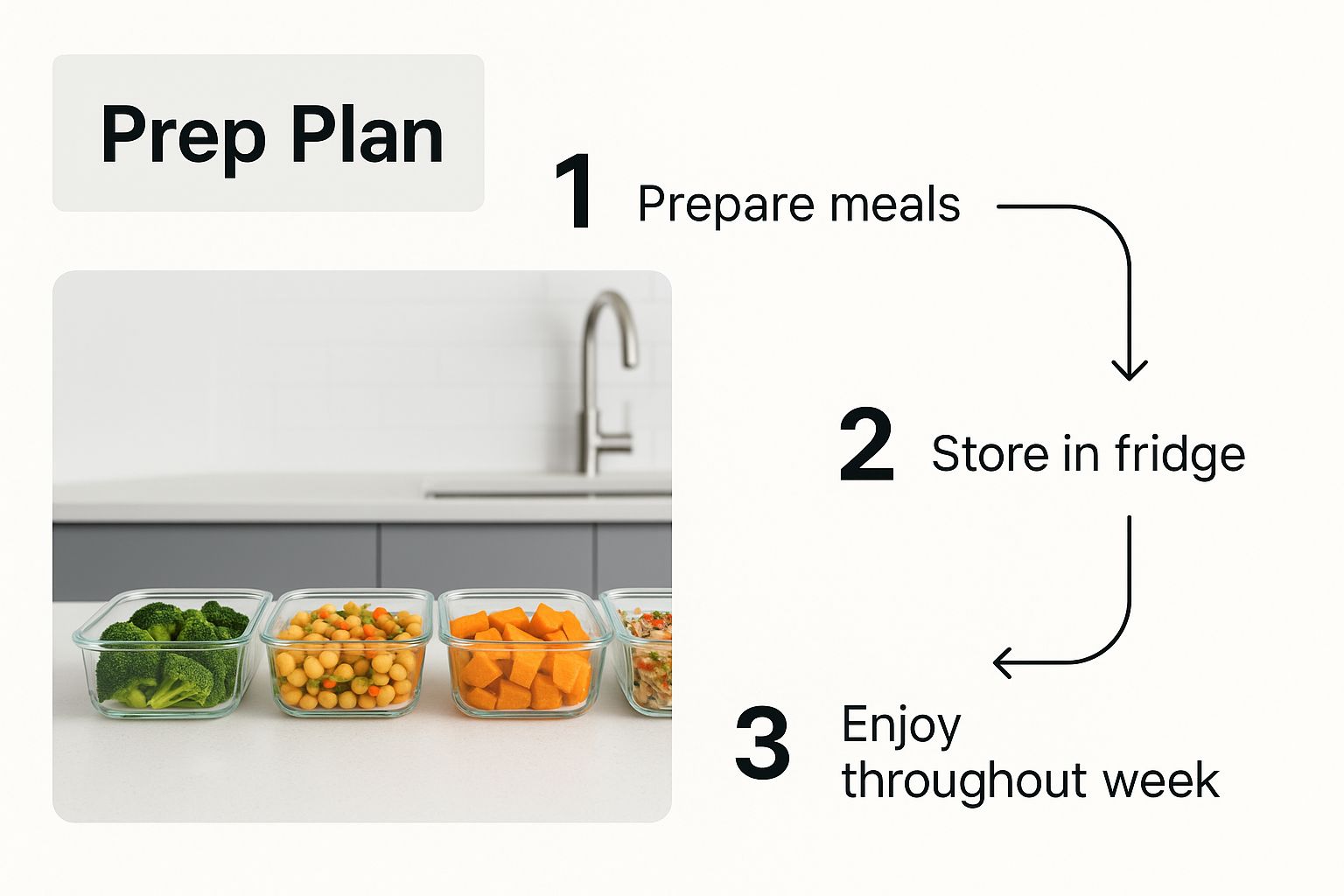
Just seeing all those colorful, organized ingredients makes it easy to imagine all the different meals you can build during the week.
What This Looks Like in a Real Week
Let's walk through a real-world example. Say this Sunday, you prepped four things: a batch of baked lemon-herb tofu, two cups of quinoa, a tray of roasted broccoli and peppers, and a jar of homemade peanut-lime sauce.
Here’s how easily that turns into a varied week of meals:
- Monday Lunch: A classic grain bowl. Just scoop some quinoa, tofu, and roasted veggies into a bowl and top it with that peanut sauce. Simple.
- Tuesday Lunch: A power salad. Grab a big handful of spinach, add your prepped quinoa, veggies, and tofu, but switch it up with a simple olive oil and vinegar dressing you have on hand.
- Wednesday Dinner: A quick stir-fry. Throw the tofu and veggies into a hot pan with a splash of soy sauce and some fresh ginger. Serve it over the quinoa you just have to reheat.
See? You get all the structure of a meal plan without any of the monotony.
If you love this idea but want to take the guesswork out of it, there are tools that can help. For instance, using an AI-powered meal planner can generate component ideas and recipes based on your protein targets and food preferences, doing a lot of the planning work for you. Ultimately, this strategy is about creating a system that makes healthy eating feel easy and, most importantly, enjoyable.
Cooking Techniques That Guarantee Great Results
Great meal prep isn't just about what you plan—it’s about how you cook. I can't tell you how many times I used to end up with soggy vegetables and bland, spongy tofu by Wednesday. But over the years, I've figured out a few simple methods that completely changed the game for my vegetarian protein meal prep.
These aren't some fancy culinary school secrets. They're just practical, easy adjustments that lock in fantastic texture and flavor. This is what turns a container of prepped ingredients into a meal you actually get excited to eat.
Mastering Tofu and Tempeh
Let's be honest, the biggest hurdle with tofu and tempeh is usually the texture. The secret to getting that satisfying, crispy-on-the-outside, firm-on-the-inside bite is all about getting the water out before you start cooking.
For tofu, this means you have to press it. You don’t need a special gadget. Just wrap a block of extra-firm tofu in a clean dish towel, place it on a plate, and set something heavy on top. A cast-iron skillet or a stack of cookbooks does the job perfectly. Give it at least 30 minutes to press out the excess liquid.
Tempeh needs a slightly different approach: steam it first. Pop the block in a steamer basket over simmering water for about 10 minutes. This little trick gets rid of any bitter notes and opens it up to soak in marinades like a sponge. Once you’ve done this prep, both are ready to be cubed, marinated, and baked or air-fried to golden perfection.
Roasting Vegetables for Longevity
Soggy, sad-looking vegetables are the arch-nemesis of good meal prep. The key to avoiding them is simple: high heat and enough space. If you cram everything onto one sheet pan, your veggies will just steam themselves into a mushy pile.
Here’s my never-fail process for perfectly roasted vegetables:
- Crank your oven up to 400-425°F (200-220°C). That high heat is crucial for getting those delicious caramelized edges.
- Toss your chopped veggies (broccoli, bell peppers, sweet potatoes, you name it) with a light drizzle of oil and your favorite seasonings.
- Spread them out in a single, even layer on a baking sheet. Give them room to breathe! If you have to, use two pans. It's worth it.
- Roast for about 20-30 minutes, or until they're tender and slightly browned.
Let them cool down completely on the pan before you even think about putting them in a container. This prevents condensation from building up and turning your perfectly roasted veggies soggy in the fridge.
The goal of prep-day cooking isn't just to cook food, but to cook it in a way that respects its future state. A little extra effort on Sunday—like pressing tofu or not crowding a pan—pays off in delicious, perfectly textured meals all week long.
The Magic of Homemade Sauces
Finally, a killer sauce is the secret weapon that ties everything together and keeps your meals from feeling repetitive. Whipping up a versatile dressing from scratch is way easier than you think and tastes so much better than anything from a bottle. A creamy lemon-tahini dressing is my absolute go-to for vegetarian protein meal prep.
To make it, just whisk these ingredients together:
- ½ cup of tahini
- Juice of 1 lemon
- 1-2 cloves of minced garlic
- A pinch of salt
- Cold water, adding one tablespoon at a time, until it’s the perfect consistency for you.
This sauce is incredible on roasted vegetables, grain bowls, and salads. It adds a huge boost of flavor and healthy fats that can elevate just about any meal you create during the week.
Storing and Assembling Meals Like a Pro
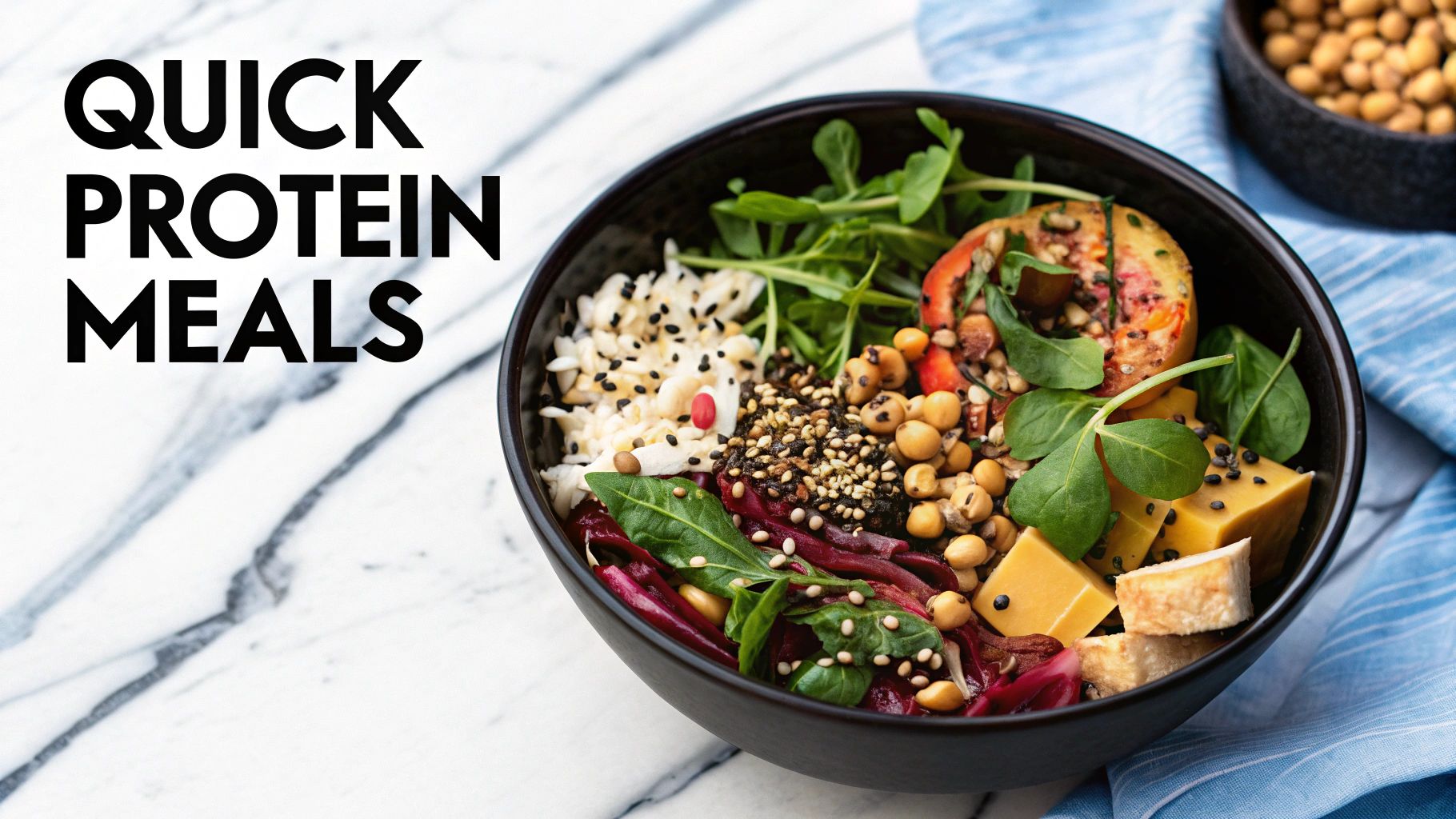
You’ve done the hard work of cooking, so don't let it go to waste with sloppy storage. How you store your food is the final, critical piece of the puzzle. It’s what keeps everything fresh, safe, and tasting just as good on Wednesday as it did on Sunday.
Before you even think about containers, make sure your cooked food has cooled down completely. Sealing warm food is a one-way ticket to condensation, which means soggy veggies and a perfect environment for bacteria. I usually give my roasted sweet potatoes, quinoa, and baked tofu at least 30-45 minutes on the counter before they go in the fridge.
Choosing Your Containers
The great glass versus plastic debate is a classic in the meal prep world. Honestly, I use a bit of both, because they each have their strengths.
- Glass Containers: These are my go-to for anything that needs reheating. Glass doesn't stain (goodbye, tomato sauce residue!) or hold onto smells from curries or spices. They’re a bit heavier and pricier, but they last forever.
- Plastic Containers: For cold salads or snacks on the go, high-quality, BPA-free plastic is hard to beat. They’re lightweight, stackable, and budget-friendly. The downside is they can get stained and warped over time.
The real key is finding a system that works for you. The growing interest in this kind of convenience is clear—the market for plant-based meal kits was valued at around USD 1.1 billion in 2025 and is projected to reach USD 4 billion by 2035. It's a massive shift toward making healthy eating easier at home. You can actually learn more about the plant-based meal kit market and see just how fast it's expanding.
Pro Tip: Never, ever mix your wet and dry ingredients ahead of time. Keep dressings, sauces, and crunchy toppings like nuts or seeds in small, separate containers. This one little trick is the secret to avoiding a sad, soggy lunch.
Lightning-Fast Assembly
Once all your components are prepped and stored, putting together a meal takes minutes. Seriously, it's that fast. Here are a few of my favorite combinations:
- The Ultimate Grain Bowl: Grab a container, add a scoop of quinoa, pile on some roasted veggies and baked tofu, and finish with a drizzle of your pre-made dressing. Done.
- A Hearty Wrap: Slather some hummus on a whole-wheat tortilla, then load it up with your protein, a handful of greens, and some chopped cucumber or bell peppers.
- The Un-soggy Jar Salad: Layering is your best friend here. Start with dressing at the very bottom, followed by hardier ingredients like chickpeas, then your grains, softer veggies, and finally, the leafy greens right at the top. When you're ready to eat, just give it a good shake.
This is how your Sunday prep pays off—by giving you back your time and energy with delicious, effortless meals all week long.
Common Vegetarian Meal Prep Questions Answered
Jumping into a new routine always comes with questions, and high-protein vegetarian meal prep is no different. At first, it might feel a little intimidating, but trust me, once you have a few simple strategies down, you'll see how easy it is to clear the common hurdles.
Let's walk through some of the most frequent concerns I hear from people just starting out. Getting these little details sorted is what builds real confidence. Before you know it, this will all be second nature.
How Can I Be Sure I Am Getting Enough Protein?
This is probably the number one question I get. The fear of not getting enough protein without meat is real, but it's easily solved by being intentional with how you build your meals.
The simplest trick is to make a solid protein source the star of every meal prep container. I always dedicate about a quarter of my container to things like baked tofu, seasoned lentils, tempeh, or a hearty three-bean salad.
From there, it's all about the little extras that add up. Choosing quinoa over white rice adds a few more grams of protein. A sprinkle of hemp seeds or some toasted almonds on a salad? That’s another easy boost. After a few weeks of thinking this way, you'll be doing it automatically.
How Long Does Prepped Food Actually Stay Fresh?
This one is super important for both food safety and just making sure your food actually tastes good a few days later. For most of your cooked staples—think grains, beans, roasted veggies, tofu—you can count on them staying fresh and delicious for a solid 4 to 5 days as long as they're in an airtight container in the fridge.
Now, for things that are already mixed with dressings or have more delicate ingredients like a cucumber salad, you'll want to eat those within 3 days. They're still safe after that, but the texture and flavor just won't be as good.
Here's my single most game-changing tip: always let your food cool completely on the counter before you seal the lid and stick it in the fridge. This one step prevents condensation from forming, which is the number one cause of soggy, sad leftovers.
Can I Freeze My Prepped Vegetarian Meals?
Yes, absolutely! The freezer is your best friend for making your meal prep efforts last even longer. Hearty, big-batch dishes are perfect for this.
A few of my go-to freezer-friendly meals are:
- Soups and Stews: A big pot of lentil chili or a creamy butternut squash soup freezes like a dream.
- Curries: Any coconut-based curry with chickpeas or tofu holds up incredibly well.
- Cooked Beans and Grains: I love freezing single-serving portions of black beans or quinoa. It's a massive time-saver for future meals.
The main thing to remember is that foods with a high water content—like fresh salads, raw tomatoes, or cucumbers—just don't survive the freezing and thawing process. Their texture gets completely ruined. When in doubt, freeze the main part of the meal and just add the fresh toppings after you've reheated it.
Ready to take the guesswork out of your meal planning? The AI Meal Planner creates personalized weekly menus based on your specific dietary goals and preferences. Get your custom plan today and make healthy eating effortless
Article created using Outrank
AI-powered nutrition
Get Your Personalized Meal Plan
AI creates the perfect meals for your goals, lifestyle, and taste.
Start Your Journej